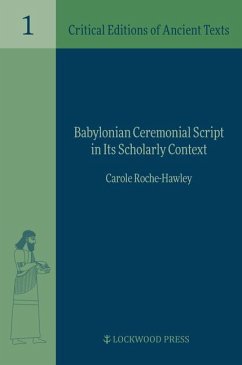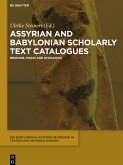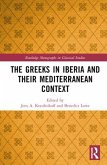"Since the advent of Assyriology in the early nineteenth century it has been known that two distinct scripts were used in ancient Mesopotamian inscriptions and documents. One, usefully characterized as "cursive," was used for the ephemeral documents of "daily life" as well as on most library and archival texts. The other was a deliberately archaizing script reserved for ceremonial use. This ceremonial script, of Babylonian origin, contained both archaic and archaizing signs, and was in productive use for over two millennia, not only in Babylonia but occasionally also in Assyria and beyond. Yet to date there has been no systematic study devoted specifically to this ceremonial script, nor any published syllabary of the archaic and archaizing signs it employs. This volume attempts to rectify this deficiency by providing a substantive introduction to Babylonian ceremonial script, along with a history of its modern study, and several case studies of how the script was actually used. The introduction is supplemented by an edition of the paleographic lists of the second and first millennia BCE, which contain pedagogical inventories of the archaic and archaizing cuneiform signs, illustrating how the ceremonial script was taught, learned and transmitted in scholarly contexts"--








